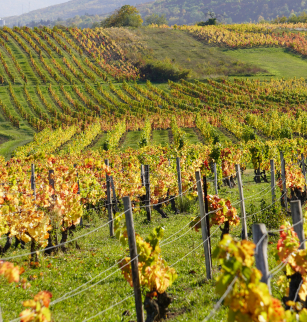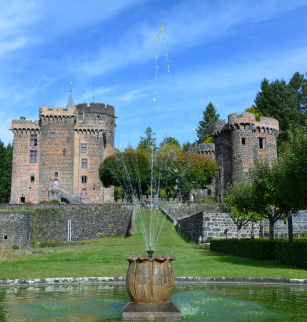Église Sainte-Madeleine

The primitive parish with its church dedicated to Saint-Clément was located at Pompignat. The Église Sainte-Madeleine in Châteaugay was originally the castle chapel built in around 1385, just after the keep. It was probably Madeleine de Châteauneuf, wife of Jean de Laqueuille, who made its dedication to Sainte-Madeleine. The primitive chapel making up the northern nave of the present-day building was built into the château’s defensive system and still retains a bartizan equipped with fire arms on its main façade. In Gothic style, the nave is covered with rib vaults and ends in a flat apse. Between 1826 and 1830, the church was extended by adding two additional naves to the south. It became a parish church after the destruction in 1802 of Église de Pompignat.
The western façade of the church has been listed as a historic monument since 1926. It features a niche on which a statue of the Virgin Annunciate is placed, dating from the 14th century (listed as a historic monument in 1995). Inside the church was a statue of Saint Mary Magdalen dating from the 17th century (listed as a historic monument in 2019). During the Revolution it was hidden for five years in a barrel by winemakers from Châteaugay who feared vandalism. A statue of Saint-Verny (listed as a historic monument in 1974) was also kept in the church. Saint Verny is the patron saint of winemakers in Auvergne. He is always dressed in the Auvergne style with the overalls and the round hat, and accompanied by his dog, a vine stock and his winemakers’ tools: Hoe, pruning knife and bousset (small barrel).
Prices
- Free access.











